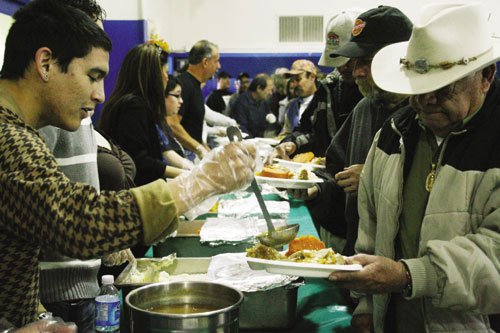This summer, 10 homeless people will be given a permanent home
of their own.
This summer, 10 homeless people will be given a permanent home of their own.
With the highest rate of homelessness per capita in Santa Clara County, Gilroy has a problem, St. Joseph’s Family Center Executive Director David Cox said.
With the help of federal funds, he hopes to chip away at that problem by targeting a very vulnerable portion of the homeless population: those afflicted with mental illness or substance abuse problems. In fact, that’s one of the criteria for participating in this program that has spread across the country.
Using the “housing first” model, organizations have aimed to cure the homeless problem with the most obvious of solutions – a home.
“Homelessness is cured by housing,” said Sam Tsemberis, founder of Pathways to Housing, in an interview with PBS.
His organization works with individuals who have been turned away from other housing programs because of their addictions or illnesses.
With the housing first model, Pathways has managed to move more than 1,000 homeless people into permanent apartments of their own since the program’s inception in 1992. The success rate is 85 percent, the organization reported.
The idea is that once stable housing is established, a productive lifestyle will follow, Cox said. With the solidity of a home under their feet and a constant roof over their heads, the program’s participants can become worthwhile members of society. A mutually beneficial relationship blossoms between all parties involved, Cox said. Homeless individuals get a home, landlords receive guaranteed, on-time payments each month and St. Joseph’s reaches its goal of combating homelessness.
But the task of getting the Gilroy program on its feet is no easy one, Cox said. Right now, he’s in the process of securing 10 studio and one-bedroom apartments.
“I didn’t think it was going to be this challenging,” he said. He has been able to locate a few possibilities but timing poses another hurdle: Cox hasn’t received the funding yet.
The U.S. Department of Housing and Development will pay for 80 percent of the program, St. Joseph’s making up the difference with donations and grants. Cox expects the funding to be available mid-summer and is working to have the housing available at the same time.
“It’s a delicate balance of timing and availability,” he said. “That’s the pickle we’re in.”
St. Joseph’s also has to fund a litany of supportive services, including employment and health services counseling.
“We’re going to be pounding the pavement, talking to foundations, any leveraging source we can,” Cox said. “We’ll have to look under every rock.”
Once the homeless are off the streets, out of living in cars and not jumping from shelter to shelter, they can move toward greater self-sufficiency, he said, with the help of the essential services.
“There is a little bit of nervousness,” Cox said about some landlords’ apprehension to taking in someone from the streets. “But they will be helping to deal with the issue of homelessness. We are assuring rent, and with the help of proper support services, there shouldn’t be too many serious issues.”
Cox expects St. Joseph’s will have to come up with about $35,000 annually to keep the program running, a number that is far smaller than the one racked up by the medical expenses that accompany homelessness.
“It’s cheaper,” Tsemberis told PBS. “We are paying a price for it (homelessness). And the price we’re paying is enormous relative to providing an apartment with support services. You don’t hold the person hostage in homelessness.”
“It’s a financial investment in the community,” Cox concluded.













